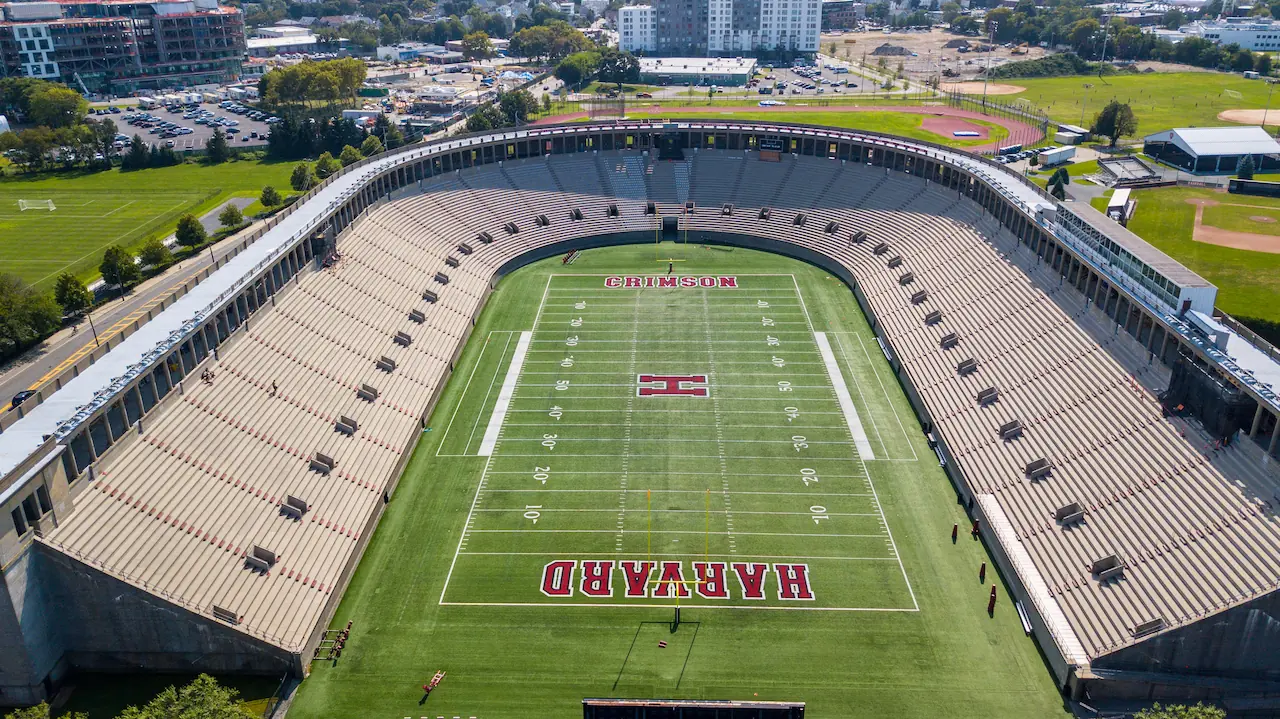Latest Sports Picks, News and Previews

It seems like every year we see the unveiling of a brand new mega-stadium built to host professional or college sports. However, there are some stadiums that have stood the test of time and remaining standing after a century or more of use.
In this post we are going to take a look at the ten oldest college and professional sports stadiums in the country, all of which host big-time sports to this day.
Franklin Field takes the prize for the oldest sports stadium still in use today, going strong since the end of the 19th century. With a capacity of over 50,000 this venerable ground plays host to the University of Pennsylvania Quakers football team, and has done since 1894.
In truth, the original stadium was really little more than a set of wooden bleachers around a football field, and these were torn down and replaced by a brick structure in 1903. This was a one-tier stadium in a horseshoe shape, with the school gymnasium at the ‘mouth’ of the horseshoe.
In the 1920s this version of the stadium was also torn down, and replaced by the two-tier version that we can still see today. This was completed in 1926, but despite the knocking down and rebuilding that took place, Franklin Field is generally credited as being the oldest active sports stadium and dated back to the original 19th century construction, not the 1926 update.
Another claim to fame is that the first radio broadcast in 1922 took place here, although this is disputed by Forbes Field in Pittsburgh, who claim that a broadcast from their stadium took place the year before. Franklin Field definitely takes the prize for the first TV broadcast though, as the first commercial football telecast took place from there in 1939.
Franklin Field served as the home field for the Philadelphia Eagles from 1958 to 1970. Remember that time the Philly fans booed Santa? That’s right, it was here! And although the pro-franchise has moved on, the old field is still home to the University of Pennsylvania Quakers today.
Here is the full list of the ten oldest sports stadiums in the US, spanning a range of construction dates from 1894 to 1923. There are racecourses like the Churchill Downs (1875) and the Saratoga Race Course (1868) which predate the structures on our list, but as a ‘stadium’ generally refers to venues for team sports, those race tracks don’t make the grade here.
So here’s the official top ten list, made up of 8 college venues and 2 professional ballparks:
| No. | Stadium Name | Construction Date | Location | Construction Cost | Seating Capacity | Primary Team(s) |
|---|---|---|---|---|---|---|
| 1 | Franklin Field | 1894 | Philadelphia, Pennsylvania | $100,000 | 52,958 | University of Pennsylvania Quakers |
| 2 | Harvard Stadium | 1903 | Boston, Massachusetts | $310,000 | 30,323 | Harvard Crimson |
| 3 | Fenway Park | 1912 | Boston, Massachusetts | $650,000 | 37,755 | Boston Red Sox (MLB) |
| 4 | Wrigley Field | 1914 | Chicago, Illinois | $250,000 | 41,649 | Chicago Cubs (MLB) |
| 5 | Nippert Stadium | 1915 | Cincinnati, Ohio | $35,000 | 40,000 | University of Cincinnati Bearcats |
| 6 | Vaught-Hemingway Stadium | 1915 | Oxford, Mississippi | $75,000 | 64,038 | University of Mississippi Rebels |
| 7 | Camp Randall Stadium | 1917 | Madison, Wisconsin | $15,000 | 76,062 | University of Wisconsin Badgers |
| 8 | Neyland Stadium | 1921 | Knoxville, Tennessee | $42,000 | 101,915 | University of Tennessee Volunteers |
| 9 | Rose Bowl Stadium | 1922 | Pasadena, California | $272,198 | 88,565 | UCLA Bruins |
| 10 | Los Angeles Memorial Coliseum | 1923 | Los Angeles, California | $954,873 | 77,500 | USC Trojans |
We have to give a special mention to Fenway Park, home of the Boston Red Sox and the oldest stadium around which plays host to a professional sports team. We’re lucky to still have the old girl in operation, as in the 1990s the then-owners planned to knock it down and replace it with a modern stadium, which would have had a larger capacity and better facilities. Fortunately, the fanbase (and finances) managed to persuade the new ownership group to modernize the existing stadium rather than build a new one, which is why baseball is still played at Fenway to this day.
This iconic ballpark has a number of features that make it unique, apart from its longevity. The 37 foot Green Monster – the left-field wall – is one of the most recognizable features in baseball, featuring the last manual scoreboard in pro sports. Then there’s Pesky’s Pole, the right-field foul pole that’s just 302 yards from home plate, since the stadium has irregular sides in order to fit in with the surrounding streets. If you are a fan of sports in general and baseball in particular, then a visit to Fenway is a must on your sporting bucket list.
(As a footnote, football fans won’t need reminding of the oldest NFL venue in operation, but just in case you are drawing a blank it is – of course – Lambeau Field in Green Bay.)
Now you’re up to date on the latest about the oldest. Let’s hope that these grand old stadiums are still standing tall in another century!

Ross has been writing about sports for over a decade, spcecializing in the NFL, soccer and boxing. His written work has appeared on a number of online publications over that time.